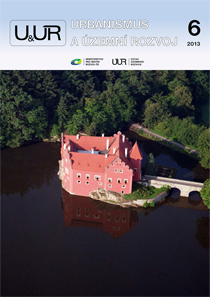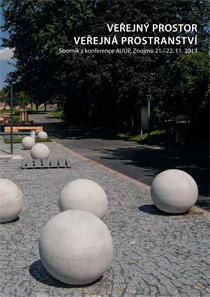

Residential stability of inhabitants of Prague’s suburbia: A case study of the micro-region of Dolní Břežany, by Jana Temelová & Petra Špačková
The development of suburbanization around most Czech towns raises the important question of residential mobility versus stability of the population of suburban settlements. This study discusses the attitudes of households to prospective changes of their domicile and the residential stability of the population as illustrated by the micro-region of Dolní Břežany, which is located in the southern hinterland of Prague. Based on the results of a questionnaire survey, this territory may be regarded as relatively stable. Young people and those with higher education, who are generally more mobile, and particularly those who have lived in the settlement for a short time, tend to move. The apartment block is a specific type of housing with high fluctuation of inhabitants.
The geographic shape of the town and the accessibility of free landscape, by Jindřich Felcman & Daniel Franke
The subject of this article is the relation between the process of the enlargement of built-up areas and the limitation of the accessibility of free landscape. In the theoretical part of this study, the accessibility of free landscape is described as an essential parameter of the quality of life in towns. The methodology used was a GIS analysis of the development of the geographic shape of built-up areas of the town of Liberec and its impact on the direct accessibility of free landscape in the hinterland as compared to three other regional capitals in the Czech Republic. The results of the research indicate that both the size of built-up areas and their shape in the landscape are decisive factors.
Public interest in agricultural landscape and the process of physical planning, by Vladimír Mackovič
The territory of the Czech Republic has predominantly the character of cultural landscape, an important part of which is agricultural. Its shaping is determined by spatial projections of economic activities related to the management of agricultural land. At the same time, agricultural land fulfils a number of non-productive functions and its sustainable existence and quality are in the public interest. Agricultural production and other forms of use of agricultural land resources are carried out by the private sector, based on market principles, while protection of the public interest is a matter of state administration represented by municipalities and Regions. In most cases, profit from economic activities in agricultural land resources and protection of their non-productive functions follow contradictory objectives. Sustainable land use therefore entails the finding of a reasonable compromise.
The urban context of Bratislava’s riverfront, by Silvia Bašová
The context of water and the city may be a significant feature and an advantage for the urban environment. Views and outlooks from riverfront locations represent a tourist attraction. A promenade is not only a natural interface between water and town but also a linear showcase highlighting the waterside frontage of buildings. The riverfront of Bratislava is one of those lucky places which originated on a river as a constant link between town and water. Bratislava’s riverfront was remodelled as a consequence of the regulation of the River Danube and its bed and banks in the 20th century. Currently, the zones of the Eurovea and the River Park act as two independent islands lacking in continuation and links to the interior of the pedestrian zone of the old town. There is an absence of an unequivocal connection between the bank and St Martin’s Cathedral, the lower castle and the castle of Bratislava. The maintenance of the city’s character and a sensible perception of the historic context should remain a priority in the completion and reurbanization of Bratislava’s riverfront. Water and the city are related to each other not only in their ground structure but also in the perception of the skyline and the panorama.
Public and cultural heritage, by Marie Tomíšková
Although we pay little attention to them, immovable cultural monuments make our immediate surroundings. Almost every settlement, urban or rural, has its own long history which has shaped its urban and architectural development, leaving evident footprints in the form of the network of streets, public areas, private plots and important buildings. This environment, to which we establish certain relations, inevitably becomes a part of our everyday life. Cultural monuments, both solitary objects and parts of historic towns, also play an irreplaceable role in the use of leisure time as popular tourist destinations.